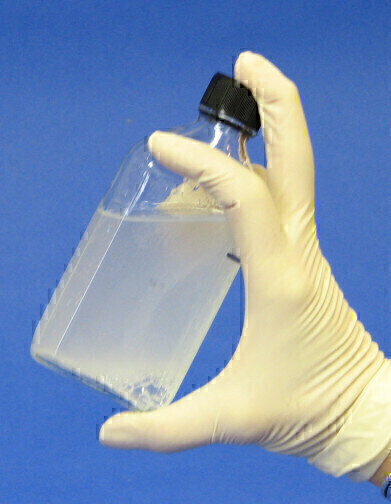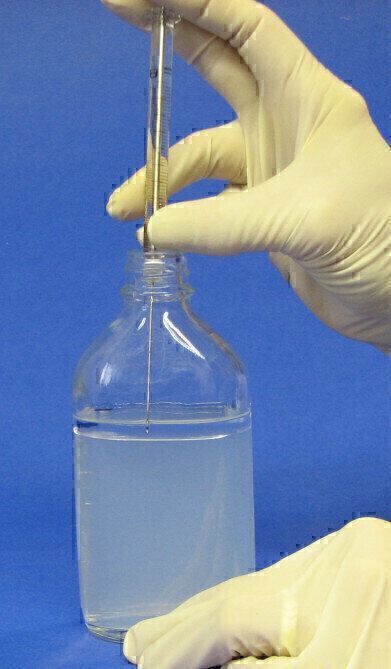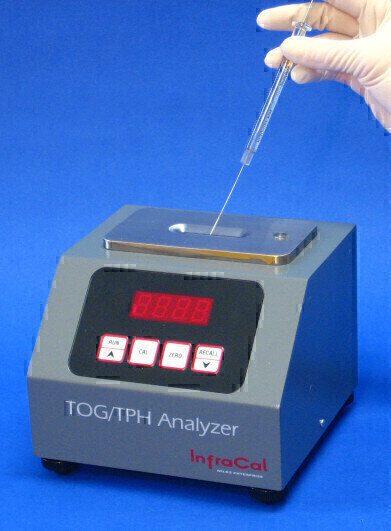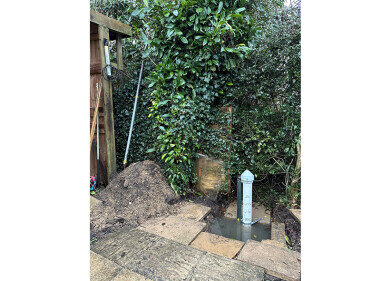-
 Shake for 2mins
Shake for 2mins -
 Take solvent from top
Take solvent from top -
 Deposit on sample plate
Deposit on sample plate
Water/Wastewater
Infrared Analysis Reduces Testing Costs and Provides Fast Results
May 26 2011
Wastewater professionals who are enforcing industrial effluent standards for fats, oil and grease (FOG) either must perform numerous gravimetric tests or spend a considerable amount of money with a contracted testing laboratory. Infrared analysis form Wilks Enterprise (USA) provides an alternative which will significantly reduce costs and save time in the following ways:
1. 90% less hexane required for solvent extraction.
When using EPA method 1664, a liter sample requires 100 ml of hexane for the extraction. The amount of solvent cannot be reduced with this method as the weight of the residual oil would be so low it would be less accurate for lower levels of oil and grease. With the hexane/infrared extraction method, only 50µm m of extract are required for analysis and the sample size can be reduced to 100 ml for a fairly well mixed waste stream. This 100 ml volume only requires 10 ml of hexane for the extraction. In addition to a cost savings, reduced solvent usage means less exposure to solvent fumes for the operator and less volatile fumes as a potential fire hazard.
2. 10 minutes versus 2 hours for analysis.
The hexane/gravimetric method is time consuming -- taking up to 2 hours before a final result – as well as labor intensive. The hexane/infrared method takes less than ten minutes. This means quick sample turnaround and less laboratory technician time.
The hexane/infrared method is easy:
• Add hexane to the sample and shake for 2 minutes
• Allow sample to partition
• Take 50 µm from the top layer of hexane extract and deposit on sample plate
• Press the “run” button on the analyzer, after the timer countdown of 5 minutes the measurement result is displayed
3. Analysis can be done on-site.
Fixed filter infrared analysers, such as the Wilks InfraCal TOG/TPH Analyzer – Model HATR-T2, are compact (less than 6” square), light weight (less than 5 lbs) and be operated from a 12 volt power supply allowing them to be operated from a vehicle. This means wastewater effluent testing can be done at the site -- making it easier to catch high oil and grease offenders. By screening for out-of-compliance effluent discharges, the number of samples collected, transported and ultimately tested in the laboratory can be reduced. The same can apply for in-laboratory testing. Samples can be quickly screened and the effluent samples that are over the oil and grease limit can be tested by the EPA 1664 method—saving time, solvent, and labor costs.
4. Less glassware to clean (or break!).
In the field, bottles with milliliter markings on them can be used to collect the sample, add the hexane, shake the sample and take the 50 µm of extract from the top for measurement. In this case, only one piece of glassware is used for analysis—requiring less solvent for cleaning and avoiding bulky separatory funnels with an easily breakable tip. If you have not broken a separatory funnel yet, you haven’t done enough extractions!
Digital Edition
IET 34.2 March 2024
April 2024
Gas Detection - Biogas batch fermentation system for laboratory use with automatic gas analysis in real time Water/Wastewater - Upcycling sensors for sustainable nature management - Prist...
View all digital editions
Events
Apr 30 2024 Melbourne, Australia
Apr 30 2024 Birmingham, UK
May 03 2024 Seoul, South Korea
May 05 2024 Seville, Spain
May 06 2024 Minneapolis, MN, USA

















